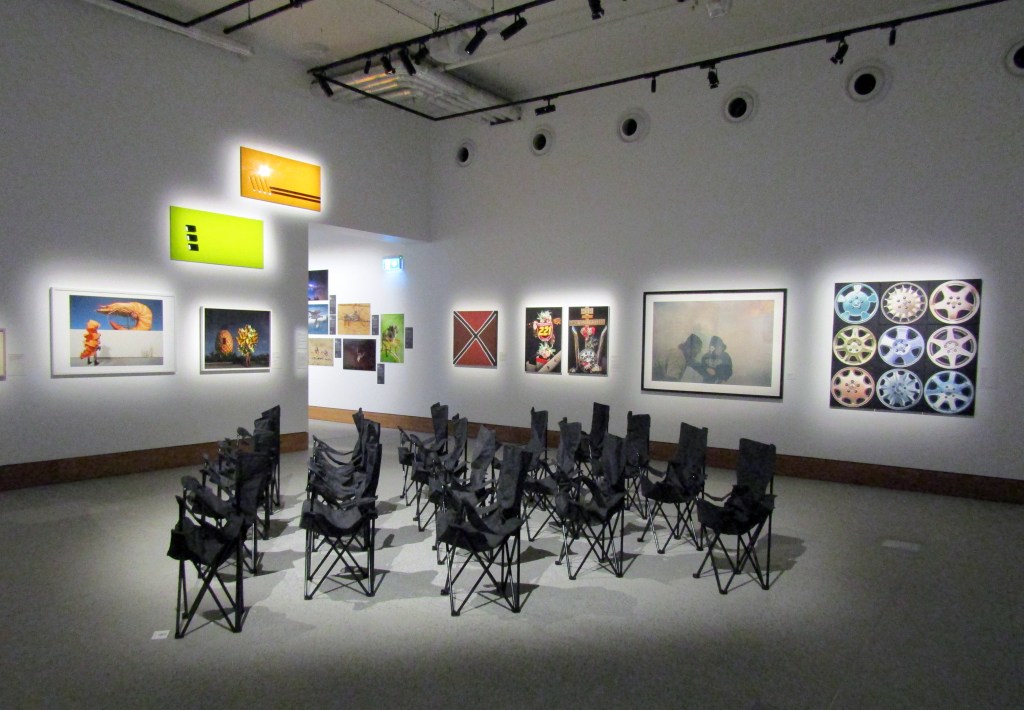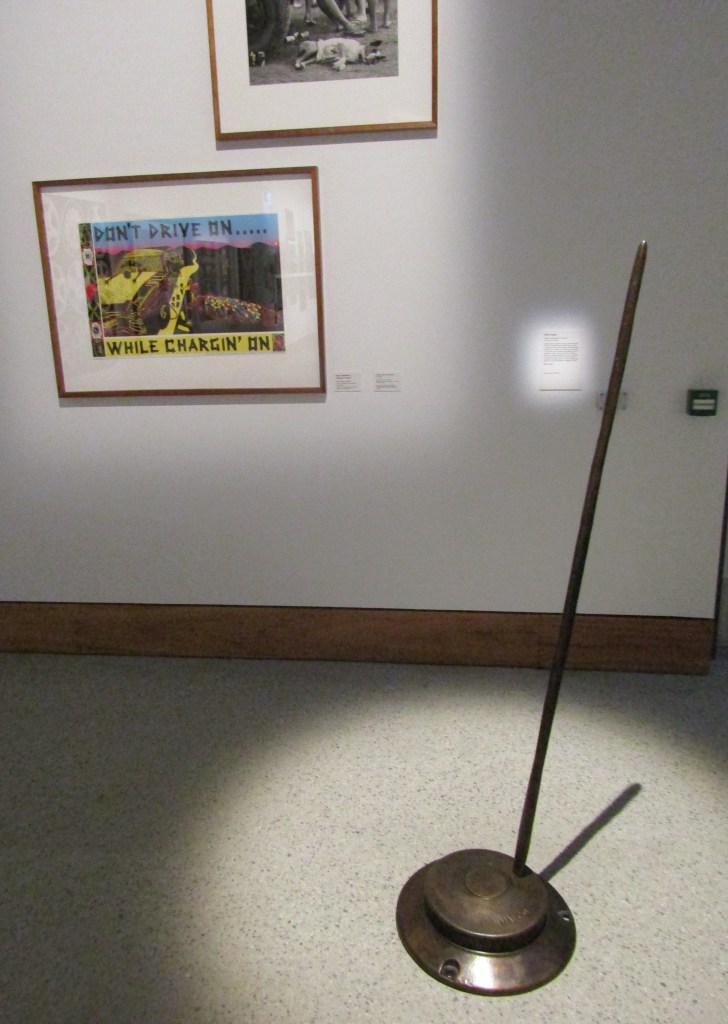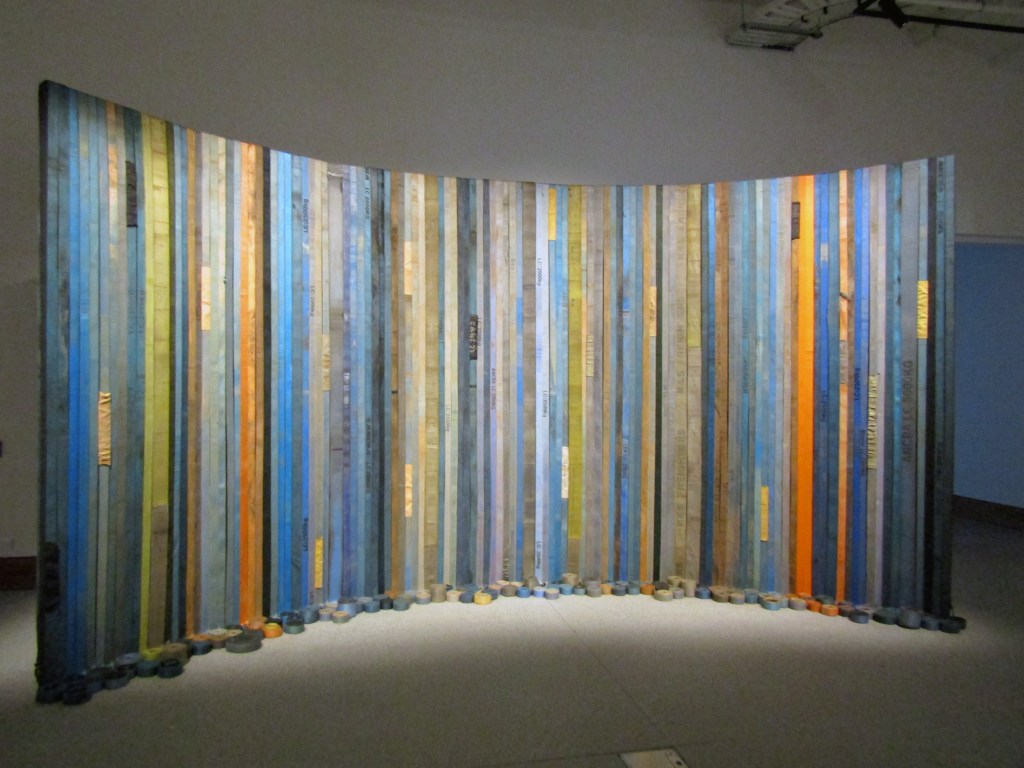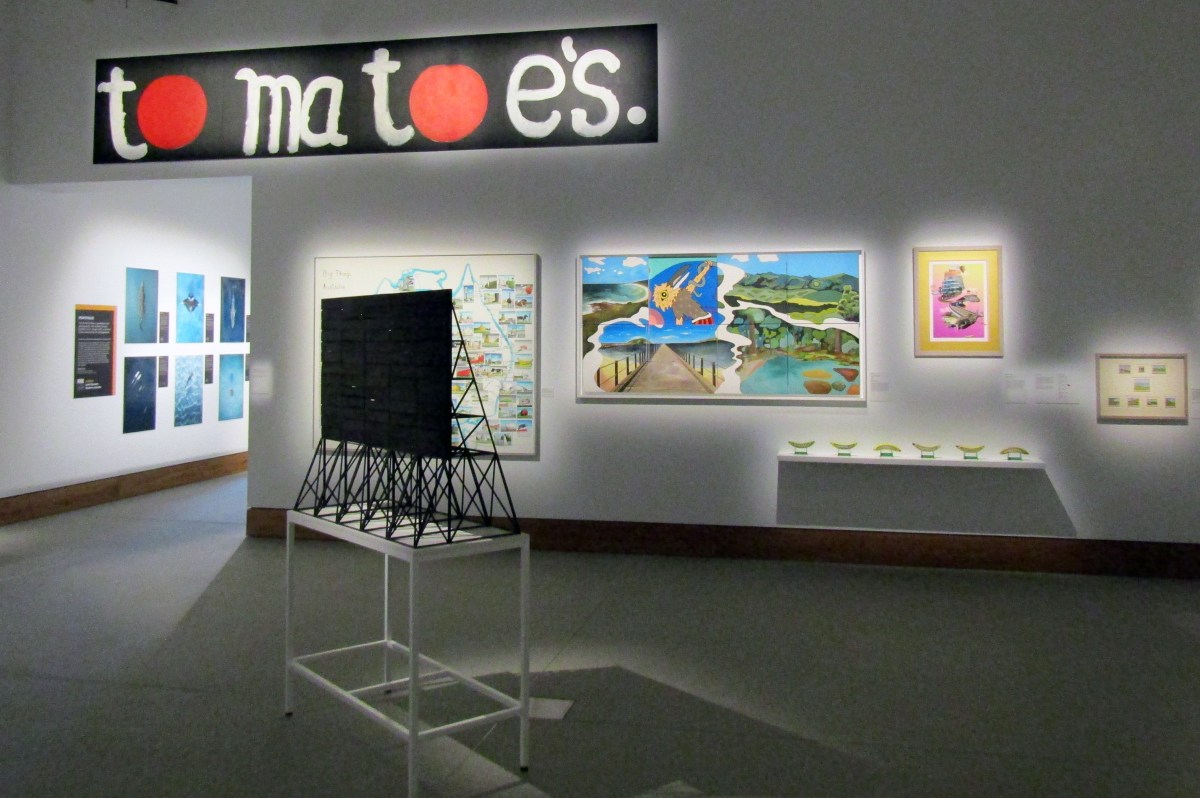Halfway at Yarrila Arts and Museum (YAM) could make Coffs Harbour, which is a midpoint for drivers between Meanjin/Brisbane and Eora/Sydney, a destination for art lovers from both cities and everywhere in between.
An unsuspecting visitor, this reviewer included, may experience a moment of cognitive dissonance when met with this wondrous Wunderkammer. The title of the institution stipulates both ‘arts’ and ‘museum’. Situated on Gumbaynggirr Country, YAM opened in September 2023.
Consistent with many museums in regional Australia, a wall in Halfway is salon-hung with artworks and artefacts are amassed on the floor in a manner that obstructs the movement of visitors. The studious among them may be seeking to find something unique and many of the objects will provide this gratification. They were made by some of the finest artists our country has produced since the beginning of the 20th century.

Mayfair: (tomatoes) four paintings one sign, a quiet chuckle for ‘Bubbles’ (1992-2005) by Robert MacPherson protrudes from above an archway. The ship painter from Brisbane was inspired by roadside advertising for food, which primarily consisted of text painted in white on boards painted black. From the late 1960s up until his death in the early 2020s, MacPherson elevated everyday materials. The Postminimalist painter consciously emphasised the forms within their aesthetics. While the Mayfair series may reference a lunch bar MacPherson frequented, this painting should also have salience among roadtrippers.
Read: Exhibition review: Donna Marcus, Radiate, HOTA
Another sight that is almost certain to delight drivers above the age of 40, is Screen #4 Chargrilled (2006) by Callum Morton. Its inclusion may induce nostalgia for the 1970s, when National Route 1 began bringing tourist traffic to Coffs Harbour and drive-in cinemas were still in their peak of consumption. The blackened miniature pays homage to the monumental screens that were once a common feature of the Australian landscape. The Canadian-born Australian artist undertook his education, from a Bachelor of Architecture to a Master of Fine Arts, in Australian tertiary institutions.

Perhaps the most poignant of voices to contribute towards this chorus about regional Australia comes from Blak Douglas. Born to a Dhungatti father and a Caucasian mother, the musician, qualified graphic designer and “self-practised” painter won the Archibald in 2022 for his portrayal of Karla Dickens. Proving his prowess across multiple disciplines, Silent Cop (2019) is an editioned bronze and concrete sculpture. The pattern Douglas provided to the foundry was fashioned from a traffic direction device, referred to as a “policeman’s hat”, and a eucalyptus sapling shaped into a spear. The title of the artwork is its colloquial name. Typical of memorials in material and form, Silent Cop affectingly conveys a continued concern among his compatriots over “[p]olice abuse and deaths in custody”.
From subtle to semitrailer-sized, True Blue (2023) is a colourful curtain of ratchet tie-downs that stands approximately three metres tall. The artist, Jane Skeer, echoes Rosalie Gascoline (1917-1999) by emerging in her 50s, and possibly in aspects of her aesthetic. These devices used by Skeer, which secure commercial cargo to vehicles, were purchased from eBay, Grays Online and Gumtree. There is an authenticity afforded by the grime embedded into the use of the set. The artwork reflects the roads that they traversed in the process of supporting a major arterial of the Australian economy.

The distances an art enthusiast may be willing to travel to experience an exhibition is a highly personal appraisal. However, what is less likely to be contested is that City of Coffs Harbour curators pulled out all the stops when curating Halfway. There are simply too many artworks worthy of mention for a single review.
Halfway is on view at Yarrila Arts and Museum until 11 February 2024; free entry. View YAM’s holiday opening hours.
This review is published under the Amplify Collective, an initiative supported by The Walkley Foundation and made possible through funding from the Meta Australian News Fund.





